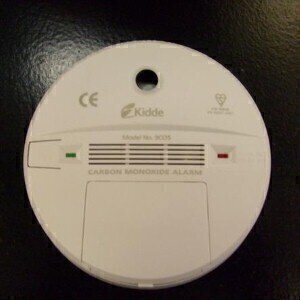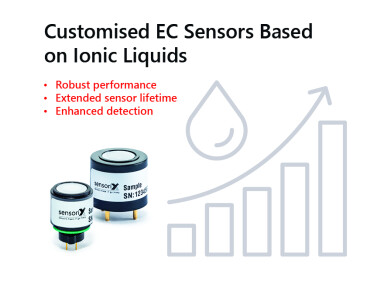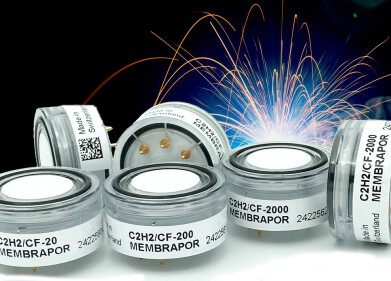Gas sensors
Gas Sensors with Unique Performance
Jan 28 2008
baseline increases substantially with temperatures above 25°C. The HCl-sensors from Membrapor (Switzerland)
measure hydrogen chloride without biasing and show, additionally to the good baseline stability, no cross-interference
to SO2 or NO2. Due to recent efforts, the response time could be reduced down to t90 Also the NH3-sensors do not need a bias-voltage and show an exceptionally low response time. At the Sensor + Test 2007, it was shown
that the NH3/MR-100 was able to detect 1 ppm ammonia, which makes it perfectly suitable for fast leak detection with portable instruments.
An even lower detection limit is required by phosphine, which is a hazardous gas with a very low TLV-value of 0.1 ppm. In order to monitor
this gas, a highly sensitive sensor is needed. With an output signal of 4’000 nA/ppm and t90 choice for this application. It is a major task to achieve a high selectivity, but also to keep the range in cross-sensitivity to an interference gas as low as possible. A new process technology has lead to hydrogen sensors which fulfil these tasks without exception. The H2/CA-1000 has a CO-interference between 0.1 % and 2.0%, which makes this H2-sensor unique, as are many other sensors from Membrapor.
Digital Edition
AET 28.4 Oct/Nov 2024
November 2024
Gas Detection - Go from lagging to leading: why investment in gas detection makes sense Air Monitoring - Swirl and vortex meters will aid green hydrogen production - Beyond the Stack: Emi...
View all digital editions
Events
Jan 12 2025 Abu Dhabi, UAE
Jan 14 2025 Abu Dhabi, UAE
Jan 20 2025 San Diego, CA, USA
Carrefour des Gestions Locales de L'eau
Jan 22 2025 Rennes, France
Safety, Health & Wellbeing LIVE
Jan 22 2025 Manchester, UK



















